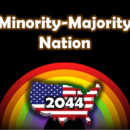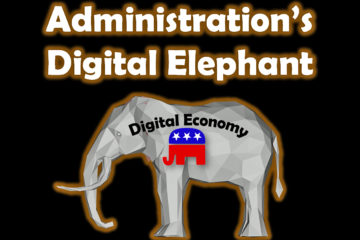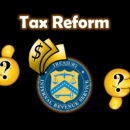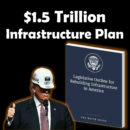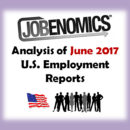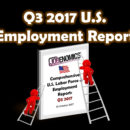Employment-Based Immigration
President Trump’s New Economy Challenge (Part 20 of 20). The United States attracts the best and brightest people from other countries to study, work, become citizens and start businesses. In 2015, immigrant startup business entrepreneurs represent 27.5%, up from 12.5% in 1996. From a Jobenomics standpoint, this is a powerful statistic considering the far-reaching contribution of foreign-born immigrants and their children to American economic growth and prosperity.
According to a report by the Partnership for a New American Economy, immigrants or their children founded more than 40% of U.S. Fortune 500 companies—a compelling reason why high-skilled immigrants are so critical to U.S. economic growth. About 20% of the newest Fortune 500 companies founded between 1985 and 2010 have an immigrant founder. Many of America’s greatest brands, Apple, Google, AT&T, Budweiser, Colgate, eBay, General Electric, IBM, and McDonald’s, owe their origin to a founder who was an immigrant or the child of an immigrant. The Fortune 500 companies that boast immigrant or children-of-immigrant founders have combined revenues of $4.2 trillion. $1.7 trillion of that amount comes just from the companies founded by immigrants.
Today’s immigrants are equally impressive. Take Elon Musk, a South African-born Canadian-American, for example. In 1995, at age 24, Elon came to America to get a PhD at Stanford, in applied physics and material science to work on ultracapacitors for use in electric cars. He started work in Silicon Valley on an H-1B visa and was sworn in as an American citizen in 2002. Since his arrival in the United States, he founded Zip2, X.com/PayPal, SpaceX, Tesla Motors, Solar City, Hyperloop, OpenAI, The Boring Company and Neuralink. Today, he is listed as the world’s 21st most powerful person and 80th wealthiest person by Forbes. Elon Musk’s role in business and job creation has had global impact well beyond the 30,000 American’s he currently employs.
The United States legal immigration is largely a family-based system. From an economic and labor force perspective, the United States needs to find ways to attract and retain foreign-born immigrants, like Elon Musk, via a legal employment-based immigration system. Employment-based immigration systems are also called a skills-based, talent-based, merit-based or points-based system used by many countries. Employment-based immigration systems give preference to exceptional individuals based upon criteria such as age; past experience; language ability, educational and technical skills; entrepreneurism, ability to start a business; and adaptability to assimilate.
Countries like Australia’s General Skilled Migration, the United Kingdom’s Highly Skilled Migrant Programme, Canada’s Express Entry system, and New Zealand Skilled Migrant system are employment-based systems that use “point calculators” to determine eligibility. For the most part, these calculations are merits-based, but some add bonus points for having a close family relative living and/or productively working in the host country. These immigration systems are skills-oriented to “fast-track” highly-skilled immigrants to permanent resident status, whether it is a permanent work visa (aka Green Card in the United States) or citizenship.
According to a recent tweet from President Trump, “The merit-based system is the way to go. Canada, Australia!”
The Government of Canada immigration website states that “We choose skilled immigrants as permanent residents based on their ability to settle in Canada and take part in our economy. There is a new system to manage how people with skilled work experience apply to immigrate to Canada. It is called Express Entry.”
Express Entry is used to manage applications for permanent residence under the:
- Federal Skilled Worker Program (allows skilled professionals with significant work experience, employability, and adaptability to gain legal permanent residence in Canada),
- Federal Skilled Trades Program (allows skilled workers with experience in a selected number of trades to gain legal permanent residence in Canada), and
- Canadian Experience Class (a popular route to permanent residence for migrants with previous Canadian work experience, such as international students).
Australia uses its General Skilled Migration (aka Skillselect) program to attract migrants to alleviate general labor shortages and attract tradespeople and skilled professionals. Skillselect’s point calculator evaluate potential visa applicants (work visas, student visas, etc.) a series of questions start with age, English competency (a score at least a “6” on all four components of the International English Language Testing System examination), post-secondary education or trade qualification (suitable to an assessment of a relevant Australian assessing authority), and necessary work experience in an applicants nominated occupation (as listed on the Australian Skilled Occupation List).
Most of the 5+ million open job positions in the United States are likely to remain unfilled due to a lack of domestic skills. While Jobenomics advocates implementation of a national lifelong applied learning and skills-based training/certification program to upgrade the skills of domestic workers, the United States also needs to recruit and retain global talent since the American education system is not producing the kind of workforce skill sets necessary for a competitive society.
The United States spends much more money and time per student than most countries. Unfortunately, these expenditures do not translate into better performance or competitiveness. According to the Organization for Economic Cooperation and Development (OECD), “students in the United States have particular weaknesses in performing mathematics tasks with higher cognitive demands, such as taking real-world situations, translating them into mathematical terms, and interpreting mathematical aspects in real-world problems.” Among the 34 advanced economies in the OECD, the United States ranked 17th in reading, 20th in science and 27th in math.
Despite all the political rhetoric about U.S. immigration, comprehensive immigration reform, illegal aliens/undocumented workers and legal immigration, the American populace is mostly uniformed or undereducated about the importance of attracting the best and brightest people from other countries to study, work, become citizens and start businesses in the United States. Most Americans would be surprised to find that the Bureau of Labor Statistics reports that there are 26,258,000 foreign-born persons in the U.S. labor force, comprising 16.7% of the total 157,130,000 American workforce (49% Hispanics, 24% Asian, 18% White and 9% Black) as of 2015. The foreign-born include legally-admitted immigrants, refugees, temporary residents such as students and temporary workers and undocumented immigrants. The U.S. Department of Homeland Security estimates the unauthorized immigrant population at 11.4 million up from 8.5 million in 2000 and 2-4 million in 1980. Consequently, there are approximately 15 million legal foreign-born U.S. residents that are increasing a rate of 1-million people per year.
Persons Obtaining Lawful U.S. Permanent Resident Status
Source: U.S. Department of Homeland Security, 2015 Yearbook of Immigration Statistics
There were 1,051,031 new lawful permanent U.S. residents in 2015. After immigrating to the United States, legal permanent residency (green card holder) is the first necessary step to becoming a U.S. citizen—the highest status of citizenship attainable. Being a valid green card holder means that allows a person to permanently reside in the United States, have lawful rights to work, and petition for family members to receive green card status. After 5+ years of good legal standing, a green card holder can apply for U.S. citizenship (naturalization). Other ways of becoming a citizen is by being born in the United States (aka “anchor babies”), being born overseas to a United States Citizen parent, living in the United States as a child when a parent undergoes naturalization, and joining the United States armed forces.
In order to become a permanent U.S. resident, one must first come to the United States. According to the U.S. State Department, a citizen of a foreign country who seeks to enter the United States generally must first obtain a U.S. visa, which is placed in the traveler’s passport, a travel document issued by the traveler’s country of citizenship. While there are about 185 different types of visas, there are two main categories of U.S. visas: Immigrant Visas (IM) and Nonimmigrant Visas (NIV). An Immigrant Visa is issued to a person wishing to live permanently in the United States. A Nonimmigrant Visa is issued to a person with permanent residence outside the United States, but wishes to be in the United States on a temporary basis such as tourism, medical treatment, business, temporary work and/or study.
Categories of Immigrant Visas (IM) Leading To Permanent Residency
With a few exceptions, a foreign citizen must be sponsored by a U.S. citizen relative, U.S. lawful permanent resident, or a prospective employer to obtain an immigrant visa. The sponsor begins the immigration process by filing a petition on the foreign citizen’s behalf with U.S. Citizenship and Immigration Services. 86% of all Immigrant Visa issued in 2016 were family-based, 10% were for special reasons such as conflict-related services and a diversity “lottery” to attract immigrants with low rates of immigration to the United States, and, lastly, 4% were employment-based. As discussed earlier, other countries like Canada, United Kingdom and Australia, prioritize employment-based immigration as the primary and fastest route to legal permanent residency.
According to the State Department, there are two primary Family-Based Immigrant Visas: Immediate Relative Immigrant Visas and Family Preference Immigrant Visas. There is no limit on Immediate Relative immigrant visas nor are there any restrictions same-sex spouses. For the family preference category there a four preferences each with a fiscal year limitation: (F1) unmarried children of U.S. citizens and their children, 23,400, (F2) spouses, minor children, and unmarried sons and daughters of a lawful permanent resident, 114,200, (F3) married sons and daughters of U.S. citizens, and their spouses and minor children, 23,400, and (F4) brothers and sisters of U.S. citizens, and their spouses and minor children, 65,000.
Employment-Based IM Visas
There are five Employment-Based Immigrant Visas: E1 through E5. Approximately 140,000 employment-based immigrant visas are made available each year to qualified applicants in five preference categories shown above. For some unexplained reason, only 25,000 Employment-Based Immigrant Visas were issued in 2016. From a Jobenomics perspective, 25,000 Employment-Based Immigrant Visas out of a total of 617,228 total Immigrant Visas (4%) is borderline criminal behavior from an economic and labor force perspective. At best, this activity is tantamount to an intellectual capital embargo in an era where the United States is failing to fill over 5 million high-skilled domestic job openings and competing for its fair share of billions of global jobs in the Network Technology Revolution.
It is worthy to re-emphasize the fact that the Network Technology Revolution is facilitating an explosion in the emerging digital economy. The McKinsey Global Institute (MGI) lists twelve disruptive NTR technologies that will affect billions of consumers and workers, and inject a hundred trillion dollars’ worth of economic activity into the global digital economy by 2025. If MGI predictions are realized, the global economic impact of these disruptive technologies would amount to $124 trillion that is roughly equal to today’s standard economy. Among the 34 advanced economies, the United States ranks 17th in reading, 20th in science and 27th in math—the disciplines required to populate the U.S. labor force with domestic workers with cognitive skills needed to solve real-world problems and provide enough digital-savvy humans to compete in the emerging digital economy. No wonder that the major Information, Network and Digital Platform companies are moving overseas or enhancing their foreign operations where the technical skills are the highest.
ABC’s of Temporary Nonimmigrant Visas (NIV)
Over 10 million people visited the United States for business or pleasure in 2016. Over 8 million or 78% (highlighted in green above) are temporary visitors for business or/and pleasure. Due to our enhanced security and perceived anti-immigration policies, the number of “B Visa” visitors dropped over the previous year by 6% or 481,000 visitors. This drop is significant not only from tourist expenditures but decreased business meeting and social contact.
Highlighted in yellow are the E, F, H, J, M, O and P nonimmigrant visa categories of special interest to Jobenomics from a workforce and business development perspective. Persons With Extraordinary Ability (O-visa) who are visiting temporarily should be given the red-carpet treatment and a fast-track to a green card if desired. To a lesser extent, the same should be true for talented or high-potential visitors, students, workers and trainees F, J, H, M and P categories. These 1,554,055 visitors by the very nature of their interest in America (education, training and work) would likely make great additions to the American labor pool and society. Moreover, they probably represent the top 5% in the global gene-pool.
In summary, foreign-born citizens tend to be more entrepreneurial than native Americans. Since the U.S. economy needs more entrepreneurs, startup businesses and skilled labor, it would be logical to promote legal immigration from an Employment-Based Preference Immigration Visa standpoint as well as a skills-based recruiting and retaining perspective on Nonimmigrant Visa holders. Far too many talented foreign graduates from American colleges and universities are not afforded a green card opportunity and are forced to overstay their visa (making them illegals) or return home. From a Jobenomics perspective, the American immigration system is upside-down. Too much attention is afforded to illegal immigration and not enough to legal immigration. In the realm of legal immigration the emphasis should shift from an 86% Family-Based Preference and 4% Employment-Based Preference to a more balanced 50%/50% emphasis.
Click to read the rest of the articles in a 20-part series on President Trump’s New Economy Challenge. Note: many series articles require a small ($5) subscription fee. Non-series articles and Jobenomics project reports are free at Jobenomics.com. All subscription fees are directly (100%) applied to the Jobenomics Urban Renewal Programs. Donations to revitalizing blighted inner-cities are most welcome.
Jobenomics deals with economics of business and job creation. The non-partisan Jobenomics National Grassroots Movement’s goal is to facilitate an environment that will create 20 million net new middle-class U.S. jobs within a decade. The Movement has a following of an estimated 20 million people. The Jobenomics website contains numerous books and material on how to mass-produce small business and jobs. Monthly website traffic exceeds one-half million hits, which is indicative of the high level of public interest regarding economic, business, labor force and workfare solutions. For more information, see Jobenomics Overview and the Author’s Biography.
Recommended reading
- Casinos Not On Gamstop
- Casino Not On Gamstop
- Casino Non Aams
- UK Casinos Not On Gamstop
- Non Gamstop Casinos
- Non Gamstop Sports Betting Sites
- Online Casinos UK
- Non Gamstop Casino Sites UK
- Non Gamstop Casino Sites UK
- Non Gamstop Casino Sites UK
- Slots Not On Gamstop
- Non Gamstop Casino Sites UK
- Non Gamstop Casino Sites UK
- Non Gamstop UK Casinos
- Non Gamstop Casino Sites UK
- Top Casino Sites UK
- Best Casino Sites UK
- UK Casino Sites Not On Gamstop
- Meilleur Casino En Ligne
- Meilleur Casino En Ligne
- Gambling Sites Not On Gamstop
- Best Non Gamstop Casino
- UK Casino Sites Not On Gamstop
- Gambling Sites Not On Gamstop
- Crypto Casinos
- Meilleur Site Casino En Ligne Belgique
- I Migliori Casino Non Aams
- букмекерские конторы
- カジノ バカラ


